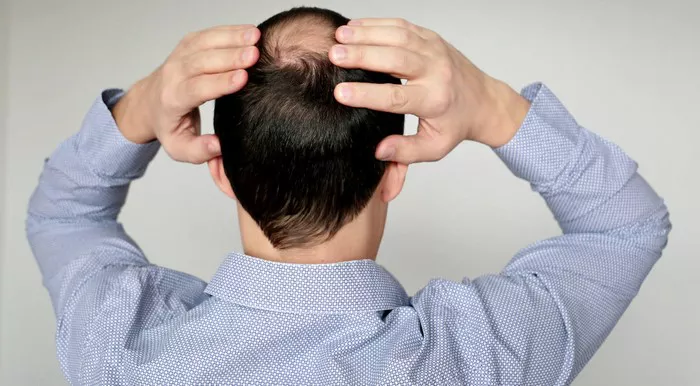Hair loss is a common concern that affects people of all ages and genders. Among the various causes, two prominent types are Alopecia Areata and Androgenetic Alopecia. While both conditions manifest as hair loss, they differ in their underlying causes, symptoms, and treatment approaches. In this comprehensive article, we will explore the key distinctions between Alopecia Areata and Androgenetic Alopecia, shedding light on the nuances of these conditions.
1. Etiology: The Root of the Problem
Alopecia Areata: This autoimmune disorder arises when the immune system mistakenly attacks hair follicles, leading to hair loss in patches. The exact cause remains elusive, but genetic factors, environmental triggers, and immune system dysfunction are believed to contribute.
Androgenetic Alopecia: Commonly known as male or female pattern baldness, Androgenetic Alopecia has a strong genetic component. It results from the interaction of hormones and genetics, specifically the hormone dihydrotestosterone (DHT), which causes hair follicles to shrink and eventually cease producing new hair.
2. Pattern of Hair Loss: Spotting the Difference
Alopecia Areata: Characterized by sudden and unpredictable hair loss, Alopecia Areata often presents as round or oval patches on the scalp. In severe cases, it can progress to total hair loss on the scalp (Alopecia Totalis) or even affect the entire body (Alopecia Universalis).
Androgenetic Alopecia: The hallmark of Androgenetic Alopecia is a gradual and predictable pattern of hair thinning. In men, it typically starts with a receding hairline and thinning at the crown, forming an “M” shape. Women, on the other hand, experience diffuse thinning across the crown of the scalp.
3. Age of Onset: Timing Matters
Alopecia Areata: This condition can occur at any age, including childhood. It often manifests suddenly, and the severity of the hair loss can vary from person to person.
Androgenetic Alopecia: While Androgenetic Alopecia can start as early as the late teens or early twenties, it more commonly becomes noticeable in middle-aged individuals. The age of onset is influenced by genetic factors, and the progression varies among individuals.
4. Associated Symptoms: Beyond Hair Loss
Alopecia Areata: Apart from hair loss, individuals with Alopecia Areata may experience tingling or itching in the affected areas. In some cases, changes in nail texture or pitting may also be observed.
Androgenetic Alopecia: Beyond hair thinning, Androgenetic Alopecia is generally not accompanied by other symptoms. However, in some instances, individuals may report itching or irritation on the scalp.
5. Underlying Mechanisms: Immunity vs. Hormones
Alopecia Areata: The immune system plays a central role in Alopecia Areata, attacking the hair follicles as if they were foreign invaders. This autoimmune response disrupts the normal hair growth cycle, leading to hair loss.
Androgenetic Alopecia: Hormones, specifically DHT, contribute to the miniaturization of hair follicles in Androgenetic Alopecia. DHT binds to hair follicles, causing them to shrink over time and resulting in the production of finer and shorter hair.
6. Prognosis and Course of the Condition: What to Expect
Alopecia Areata: The course of Alopecia Areata can be unpredictable. In some cases, hair may regrow on its own without treatment, while others may experience recurrent episodes of hair loss. Severe forms, such as Alopecia Totalis or Universalis, may be more challenging to treat.
Androgenetic Alopecia: This condition tends to be progressive, with a gradual worsening of hair thinning over time. While treatments can slow down the progression and promote hair regrowth to some extent, complete restoration of hair density may not always be achievable.
7. Treatment Approaches: Tailoring Solutions
Alopecia Areata: Treatment for Alopecia Areata focuses on modulating the immune response. Corticosteroids, immunotherapy, and topical medications are commonly used. In some cases, systemic treatments or phototherapy may be recommended.
Androgenetic Alopecia: Various treatment options exist for Androgenetic Alopecia, including topical minoxidil, oral finasteride, low-level laser therapy, and hair transplant surgery. The choice of treatment depends on factors such as gender, age, and the extent of hair loss.
Conclusion:
In summary, understanding the differences between Alopecia Areata and Androgenetic Alopecia is crucial for accurate diagnosis and effective management. While both conditions share the common symptom of hair loss, their etiology, patterns, and treatment approaches diverge significantly. Seeking professional advice from dermatologists or trichologists is essential for personalized care and the best possible outcomes in managing these forms of alopecia. As research continues to advance, the hope for more targeted and effective treatments for both conditions remains on the horizon.
How Long Does Hair Implants Last

